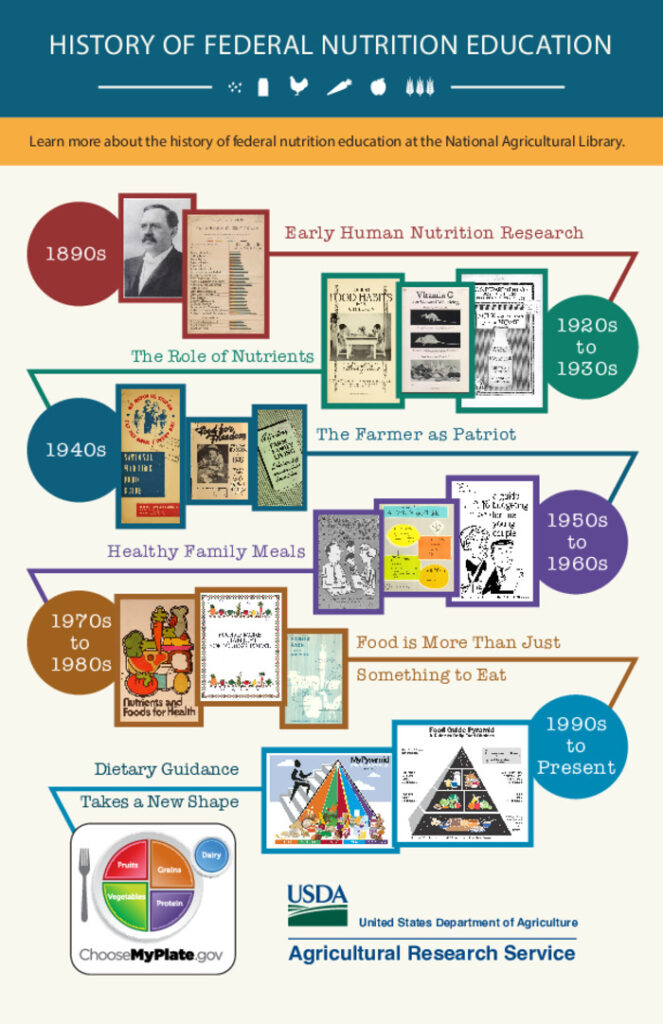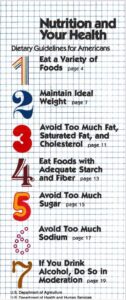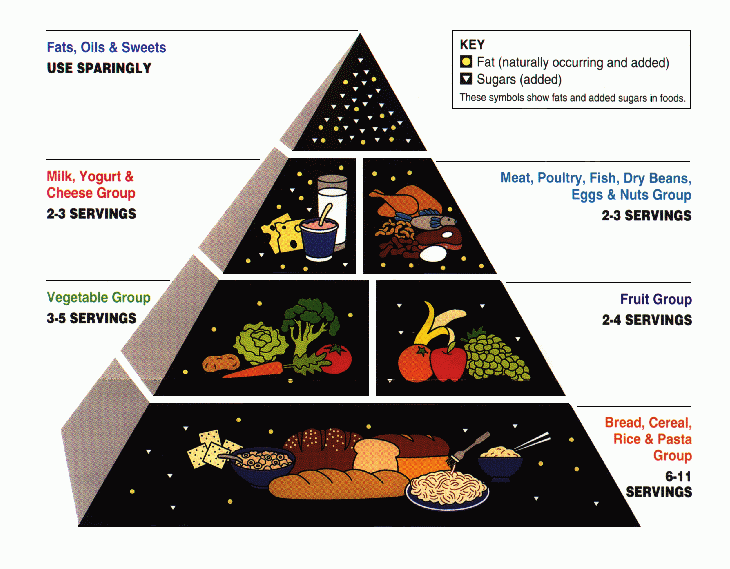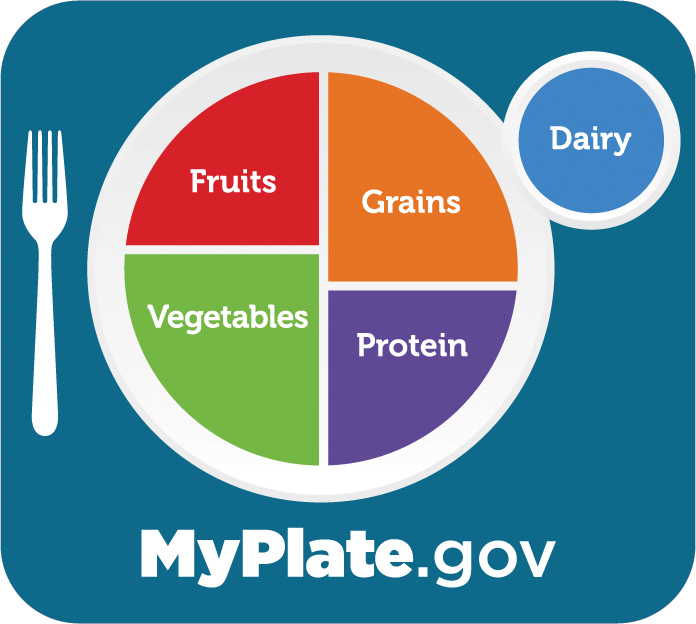A Century of Guidance
The United States Department of Agriculture (USDA) has provided nutrition education and dietary advice to the public for more than 100 years through bulletins, posters, brochures and, more recently, websites and social media. When the USDA first started providing information on diet, the information generally included advice on what to eat and drink for better health, food safety, food storage, and how to get enough minerals and vitamins to prevent certain diseases. The early audiences were mostly farmers, homemakers, and healthcare professionals like physicians and nurses. As time went by, the messaging and information evolved based on what was happening in our nation at the time. This infographic shows you how the focus changed over the decades.


Dietary Guidelines for Americans 1980
Dietary Guidelines for Americans
During World War II, the USDA created a guide called “The Basic 7”, promoting food groups that could help maintain a nutritious diet under wartime food rationing. Other guides that followed suggested only four food groups (milk, meat, fruit and vegetables, breads and cereals), and these were used in nutrition education for years.
As nutrition science evolved, there was a deeper understanding of the role diet can play in disease prevention and health promotion. In 1980, the first Dietary Guidelines for Americans were published.The original Guidelines were used in nutrition and health education settings, they are now reviewed and updated every five years, but there wasn’t an easy, visual way to share the messages with a wide audience.
You may be old enough to remember the Food Guide Pyramid, a nutrition education tool that explained nutrition recommendations by sharing the types and amounts of foods to eat each day. This was the first time people could see how many servings of each food group were recommended to maintain good health. The Food Guide Pyramid was used from 1992 – 2005.

Food Guide Pyramid 1992 – 2005
As new information about nutrition needs is identified, it is communicated to the public via reports and updated educational graphics. In 2005, the Food Guide Pyramid was replaced by MyPyramid:

MyPyramid 2005-2011
MyPyramid included information on physical activity and hydration, and showed people how to measure portions in cups and ounces instead of in “servings”. The USDA created a MyPyramid website where people could get personalized recommendations on the types and amounts of foods to eat based on age, sex, height, and weight. The website was successful, but nutrition educators were highly critical of the graphic as it was difficult to easily understand.
Today’s MyPlate
In 2011, the USDA introduced MyPlate. It used the updated 2010 Dietary Guidelines for Americans (now the 2020 guidelines) and the graphic changed from a pyramid to a plate shape, a visual people are familiar with and associate with mealtimes. It is an icon that serves as a reminder for healthy eating, and, unlike the pyramid shaped versions, it does not provide specific messages on portion sizes. The flyer Start Simple with MyPlate has information for you about small steps you can take to build a healthy eating routine, and the MyPlate Plan can give you personalized recommendations. And there’s always plenty of Healthy Tips posts on specific topics like choosing fresh and frozen produce, cooking plant-based proteins, and healthy snacking!



